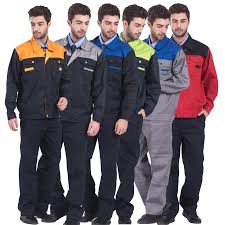different kinds of safety helmet products
Different Kinds of Safety Helmet Products A Comprehensive Guide
Safety helmets are crucial in protecting individuals from head injuries in various environments, including construction sites, industrial workplaces, and recreational activities. They serve as the first line of defense against potential hazards. With the increasing recognition of workplace safety and the need for protective gear, the market for safety helmets has expanded significantly. This article explores the different kinds of safety helmet products available, focusing on their characteristics, uses, and the technology embedded in them.
1. Hard Hats
Hard hats are perhaps the most recognized type of safety helmet, primarily used in construction and industrial settings. They are designed to protect users from falling objects, collisions, and electrical hazards. Hard hats are typically made from high-density polyethylene (HDPE) or fiberglass, providing durability and strength. They come in various types
- Type I hard hats are designed to protect against vertical impacts. - Type II hard hats offer protection from both vertical and lateral impacts, making them suitable for work environments where falls or being struck by objects from the side are concerns.
Hard hats can be equipped with additional features, such as inner suspension systems for comfort and stability, and can accommodate accessories like face shields, hearing protection, and chin straps.
2. Bump Caps
Bump caps are a lighter alternative to hard hats, designed for environments with low overhead hazards. They provide protection against minor bumps and lacerations but are not suitable for situations involving falling objects. Bump caps are often used in warehouses, factories, and during maintenance activities. They are easy to wear, resembling regular baseball caps, and can be fitted with lightweight padding for additional comfort.
Full-face helmets are primarily used in situations where there is a risk of exposure to hazardous materials, including construction sites, firefighting, and industrial work with chemicals. These helmets provide complete head protection, including the face and neck. They often come equipped with a visor or face shield to protect against chemical splashes, flying debris, and extreme temperatures.
Full-face helmets may also incorporate respirators, enabling users to work in environments with poor air quality or harmful particulates. This integrated approach enhances the safety of professionals working in toxic conditions.
different kinds of safety helmet products

4. Climbing Helmets
For recreational activities such as climbing, mountaineering, and caving, climbing helmets are essential. These helmets are lightweight yet robust, designed to protect against rockfall and impacts from falls. Many climbing helmets feature ventilation systems to ensure breathability and comfort during strenuous activities.
Climbing helmets can either be made from hard shell materials for maximum impact resistance or soft shell materials that are lightweight and flexible but provide less protection in severe conditions. The choice often depends on the specific activity and associated risks.
5. Sports Helmets
In sports, safety helmets vary significantly based on the level of impact expected. For instance, a football helmet is designed to absorb collision forces, featuring padding and a hard outer shell. Similarly, cycling and skateboarding helmets are built to protect against falls at speed, with designs that optimize aerodynamics.
The key differences among sports helmets often lie in their level of impact protection, weight, and ventilation features. It’s crucial for athletes to select helmets that meet relevant safety standards for their specific sport.
6. Specialty Helmets
Specialty helmets cater to unique needs in various fields. For example, helmets designed for welding incorporate a face shield to protect against ultraviolet light and spark emissions. Military helmets provide ballistic protection while being lightweight and comfortable for extended wear.
Conclusion
The landscape of safety helmet products is diverse, reflecting the various environments and risks associated with different professions and activities. Each type of helmet offers specific features tailored to provide optimal protection, comfort, and functionality. As safety regulations evolve, the demand for advanced materials and technologies in helmet design continues to grow, ensuring that users remain protected in their respective fields. When selecting a safety helmet, understanding the specific hazards one may encounter is essential for effective protection. Prioritizing safety gear not only safeguards physical well-being but is also a key component of fostering a safety-conscious culture in society.
-
Top Safety Clothing with AI-Driven Protection
NewsAug.02,2025
-
Top HDPE Safety Helmets - Lightweight, Durable Head Protection
NewsAug.01,2025
-
Top AI Safety Clothing with GPT-4 Turbo | Smart Protection
NewsJul.31,2025
-
Face Shield Safety Helmet with GPT-4 Turbo AI Safety
NewsJul.31,2025
-
CE Working Clothing for Construction & Welding Safety
NewsJul.30,2025
-
Premium Safety Helmet with Visor for Construction & Industrial Use
NewsJul.29,2025
